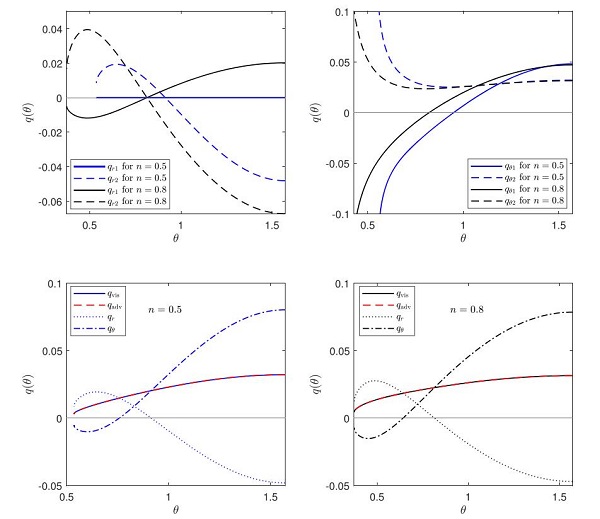Dr. JIAO Chengliang, from Binaries & Variables Group at Yunnan Observatories of the Chinese Academy of Sciences, studied the energy conservation in the inflow and the outflow of optically thin advection-dominated accretion flows. The research was recently published online in The Astrophysical Journal.
Optically thin advection-dominated accretion flows (ADAFs) are widely used in explaining the observations of the Galactic Center, low-luminosity active galactic nuclei and the low-hard state of black hole X-ray binaries. In the classical model of ADAFs, cooling is believed to be dominated by the advective heat transport (usually referred to as “advective cooling”), due to the low radiative efficiency. However, the physical nature of advective heat transport is the net difference in entropy between the incoming and the outgoing material for a specific region in the rest frame, thus it could be cooling (losing entropy) or heating (gaining entropy) equally.
As theoretical works, observations and numerical simulations have all suggested that strong outflow exist in ADAFs, a natural conjecture is that advective heat transport should be of opposite sign in the inflow and the outflow where the radial motion is in opposite direction. Then how is the energy conservation maintained in both the inflow and the outflow simultaneously?
Dr. JIAO investigated the problem. Decomposing the advective heat transport based on direction (radial and latitudinal) and mechanism (advection of internal energy and pressure work), he studied how each component works in the inflow and the outflow. It is found that in most cases, radial advection is actually a heating mechanism in the inflow, contrary to the popular interpretation of “advective cooling”, because the radial pressure work dominates over the radial advection of internal energy. The steady state can thus only be achieved when latitudinal advection is considered, which carries entropy from the inflow to the outflow where it is cooled. This work confirms and quantifies the perception that outflow (or wind) carries away entropy thus cooling the inflow.
Contact:
JIAO Chengliang
Yunnan Observatories, CAS
Email: jiaocl@ynao.ac.cn

Figure 1. Components of advective heat transport as functions of θ. Positive values represent cooling, and negative values heating. The subscripts r and θ represent radial and latitudinal direction, while 1 and 2 represent advected internal energy and pressure work, respectively.